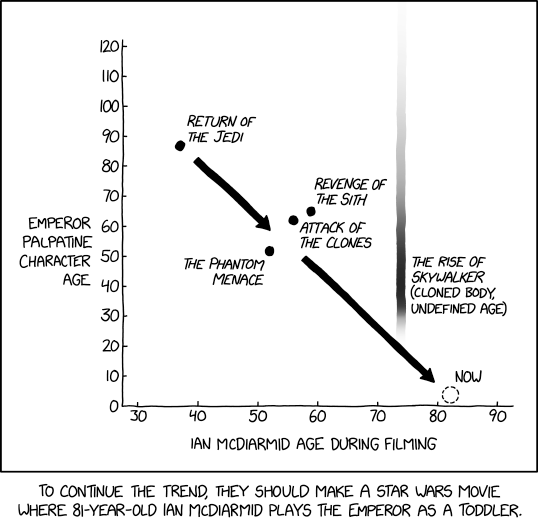Huh. I think I just figured out a relatively elegant way to randomly assign a standard 7/6/5/4/3 array to the Costume Fairy Adventures Facets.
First, roll once on the following table, rerolling doubles:
d66 Strong Facets Weak Facets
11 ———- Reroll ———-
12 Moxie, Focus Craft, Grace
13 Moxie, Focus Craft, Shine
14 Moxie, Focus Grace, Shine
15 Moxie, Craft Focus, Grace
16 Moxie, Craft Focus, Shine
21 Moxie, Craft Grace, Shine
22 ———- Reroll ———-
23 Moxie, Grace Focus, Craft
24 Moxie, Grace Focus, Shine
25 Moxie, Grace Craft, Shine
26 Moxie, Shine Focus, Craft
31 Moxie, Shine Focus, Grace
32 Moxie, Shine Craft, Grace
33 ———- Reroll ———-
34 Focus, Craft Moxie, Grace
35 Focus, Craft Moxie, Shine
36 Focus, Craft Grace, Shine
41 Focus, Grace Moxie, Craft
42 Focus, Grace Moxie, Shine
43 Focus, Grace Craft, Shine
44 ———- Reroll ———-
45 Focus, Shine Moxie, Craft
46 Focus, Shine Moxie, Grace
51 Focus, Shine Craft, Grace
52 Craft, Grace Moxie, Focus
53 Craft, Grace Moxie, Shine
54 Craft, Grace Focus, Shine
55 ———- Reroll ———-
56 Craft, Shine Moxie, Focus
61 Craft, Shine Moxie, Grace
62 Craft, Shine Focus, Grace
63 Grace, Shine Moxie, Focus
64 Grace, Shine Moxie, Craft
65 Grace, Shine Focus, Craft
66 ———- Reroll ———-
Assign values of 7 and 6 to the Facets listed under the “Strong Facets” column. To do so, roll a single die. On any odd roll, set the first-listed Facet to 7 and the second-listed Facet to 6; on any even roll, set the first-listed Facet to 6 and the second-listed Facet to 7.
Next, assign values of 4 and 3 to the Facets listed under the “Weak Facets” column, following the same procedure as above.
Finally, set your remaining Facet to 5.
(There are 120 ways to assign five distinct values to five slots, which has a pesky prime factor of 5 floating around in it, so I believe rerolling one time in six is the best we can do with only d6s and d12s to work with. And no, the Eat God stretch goal for the Costume Fairy Adventures conversion guide hasn’t been met yet, but I’m reasonably sure it will be, so I’m getting the jump on some of the math shit!)
This nerd sniped me pretty hard. Probably would’ve been stronger if I was at a computer.
d66 has 36 options, and accepting 1/36 rerolls, you get to 5*7, which has the 5 factor (yay!) but also a 7 factor that’s hard to remove. Doing even 1/7 rerolls is already inefficient, since (1/7)+(1/36) is greater than 1/6.
Doing d6 with d12 has 72 options. 71 is useless here (prime), and 70 is 35*2, so it has all of the same problems as 35.
Doing d12 with d12 gets to 144. Besides the obvious 140 option (35*4, so 7 issue again) there’s also the idea of going straight to 120 from here. Unfortunately, that rerolls 24/144 of the time, or 1/5, and 1/5>1/6.
The last thing I tried was d666, getting to 216 options. Accepting one reroll gets to 215 options, or 43*5 - which DOES get the 5 factor, but 43 is also prime and needs to be cleaned.
















